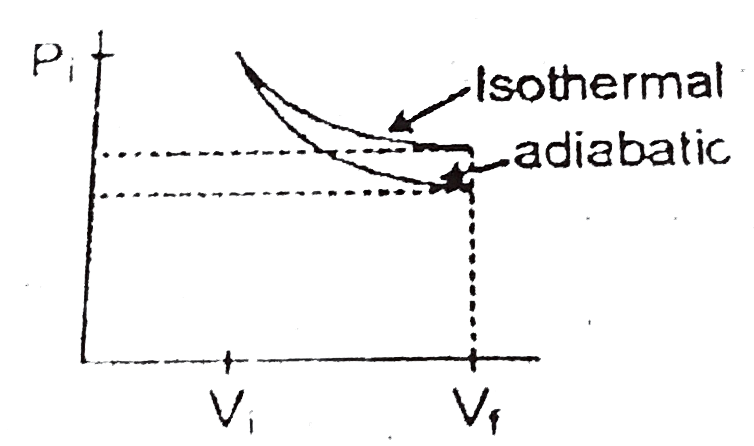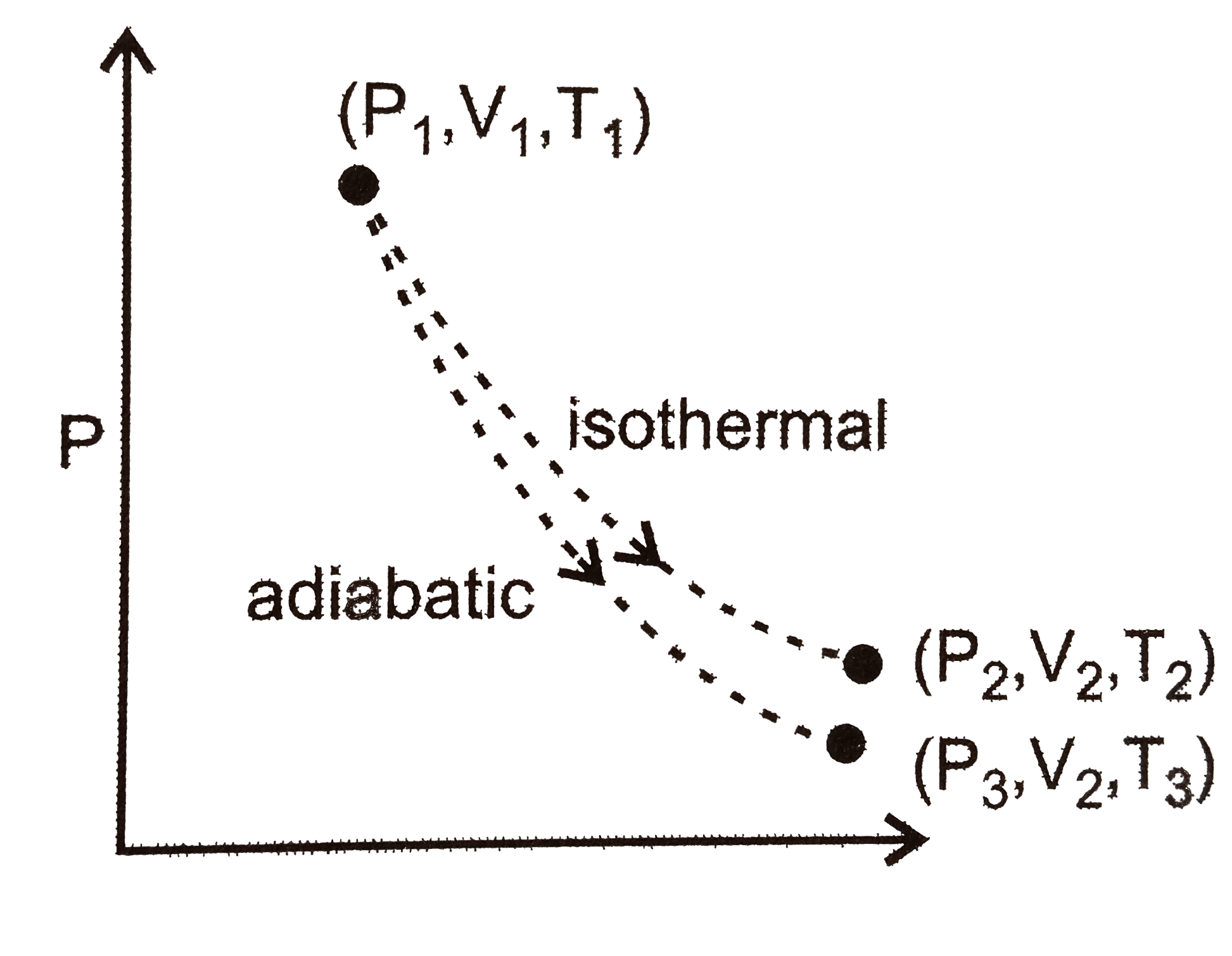An ideal gas at initial pressur eP1 and volume V1 undergoes reversible expansion to the same volume Vf either isothermally or adiabatically . Consider the following statements :
1. ∣∣Pf( adiabatic )<Pf( isothermal )∣ 2. ∣W( adiabatic )|<|W( isothermal )∣
3. ∣∣Tf( adiabatic )<Tf( isothermal )∣ 4. ∣q( adiabatic )|<|q( isothermal )∣
where the symbols have their usual meaning.
How many statements of the above are correct?
A
Only one
B
Only two
C
Only three
D
All
Video Solution
Text Solution
The correct Answer is:4

1.∣∣Pf(adiabatic)<Pf(isothermal)∣∣2.|W(adiabatic)|<|W(isothermal)|3.∣∣Tf(adiabatic)<Tf(isothermal)∣∣4.|q(adiabatic)|<|q(isothemal)|
|
Updated on:21/07/2023
Topper's Solved these Questions
Similar Questions
Knowledge Check
- Question 1 - Select One or More
Two gases have the same initial pressure, volume and temperature. They expand to the same final volume, one adiabatically and the other isothermally
Athe final temperature is greater for the isothermal processBthe final pressure is greater for the isothermal processCthe work done by the gas in greater for the isothermal processDall the above options are incorrect - Question 2 - Select One or More
The reversible expansion of an ideal gas under adiabatic and isothermal conditions is shown in the figure. Which of the following statement(s) is (are) correct?
 AT1=T2BT3>T1Cwisothermal>wadiabaticDΔUisothermal>ΔUadiabatic
AT1=T2BT3>T1Cwisothermal>wadiabaticDΔUisothermal>ΔUadiabatic - Question 3 - Select One
The slope of isothermal and adiabatic curves are related as
Aisothermal curve slope = adiabatic curve slopeBisothermal curve slope = γ×adiabatic slopeCadiabatic curve slope = γ× isothermal slopeDadiabatic curve slope = (1/2) × isothermal curve slope

